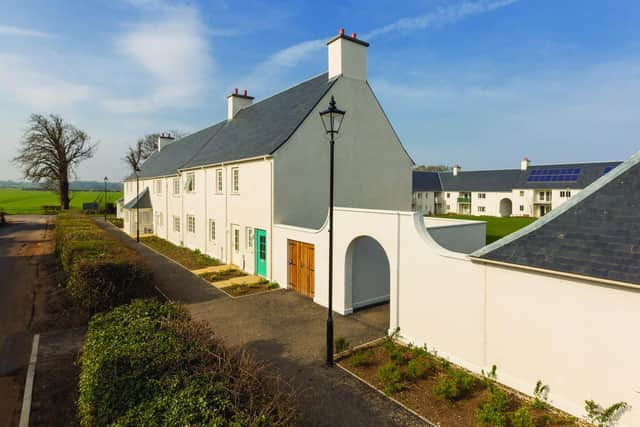Property interview: the face of trade organisation Homes for Scotland Jane Wood
We represent large to very small companies, plus social housing providers, so we are very proud to say that we go across every tenure of house building, high-end, mid-range, and social and affordable housing.
We represent the collective voice of the industry, and we work on anything that affects house building across social, economic and wellbeing indices.
Advertisement
Hide AdAdvertisement
Hide AdWe collect information and give evidence in parliament and work in planning with local and central government.


What are your members reporting about the current market? They are saying it is slowing and it takes longer to sell homes. Many of their customers are looking at smaller homes.
But the market is frustrated by planning. Our most recent report reveals a 46 per cent drop in the volume of applications for major housing developments for 2022/23 compared to 2019/20. Despite this, average decision times remainabove pre-Covid levels at 39.3 weeks, nearly two and a half times the16-week statutory time frame for such applications.
It is now critical. The issue with the planning regime has been going on for two decades, and we are not finding a solution. But, we are sitting on a cumulative deficit of homes from 2008 of about 114,000 homes.
Why aren’t we building more homes? It’s an incredibly complex sector –partly because it is so politicised. Where you build is dependent on local development plans and the planning framework.


Housebuilders have to raise capital, often purchasing the land while waiting for planning and, of course, there are all the regulatory building rules to make sure we have compliant, quality homes.
Challenges include historic issues on land availability, delays in planning, developers and their resilience – we have lost a lot of SME [small to medium-sized enterprise] builders over the last few years of difficulties for the industry.
The number of houses we build is also driven by economics, interest rates and the state of the market, plus the broader economic situation in the country and our population.
Advertisement
Hide AdAdvertisement
Hide AdWhat key changes would you recommend? At local government level, planning is not resourced properly so we have a shortage of planners across Scotland.


We aren’t getting young people going into planning, so there is a skills shortage.
We have issues with the national planning framework, which is exasperating. Planning delays create cash flow problems for builders.
We are calling for new data sets around the needs for Scotland, we have concerns that it is not contextual and doesn’t show where the population is going, and so where the need is, which results in a local development plan which is not right.
We have to do something new and different, a landmark change – in leadership, data, resources and skills. And we need consistency across local authorities. Everything goes back to planning.
What are the misperceptions about new homes? That new developments are covering up our land.
When I came into the industry, I wanted to see what was being built, so I went up in a microlight across East Lothian to see all the current developments.
Only 2. 1 percent of the land in Scotland is being built on at the moment, and we have to understand the need and who is it for.
Advertisement
Hide AdAdvertisement
Hide AdIt is not driven by housebuilders, it is driven by society. We are way behind on our housing and we need to change that.
There is a degree of Nimbyism to be found in our communities, but there is no place for it on planning committees.
Only 16 per cent of new homes have been built since the year 2000, so the idea that they are springing up everywhere is wrong.
Those who resent more new houses need to be kinder to those who want an affordable home.
What do you enjoy most about your role? I’ve worked in different industries but I soon realised that anything I did has to have a key objective of inclusion.
So moving to working for the rights of everyone to have an affordable home isn’t that much of a leap.
Housing affects everything from wellbeing and educational attainment, to jobs, the economy – it touches every aspect of life.
Born and raised I was born in Oxford, but my father was in the forces, so we lived in Malta and Germany in between coming home to Scotland. Moving schools so often has left me describing myself as self-educated, rather than well educated!
Advertisement
Hide AdAdvertisement
Hide AdQualifications I studied institutional management at Napier University.
Family Married to Christopher Wood, a Scottish artist. Four children aged from teenagers to early 30s.
Where do you live In Dunbar, East Lothian. We live in a listed building and it is a really interesting house.
Outside interests I’m a special advisor for Child Bereavement UK, a fantastic charity, I’m on the board of The Royal Scottish National Orchestra, which has a great outreach programme to make music more accessible for all, and I sit on the CBI Council in Scotland.
Hobbies Sea swimming, horse riding, creative writing, and cooking.